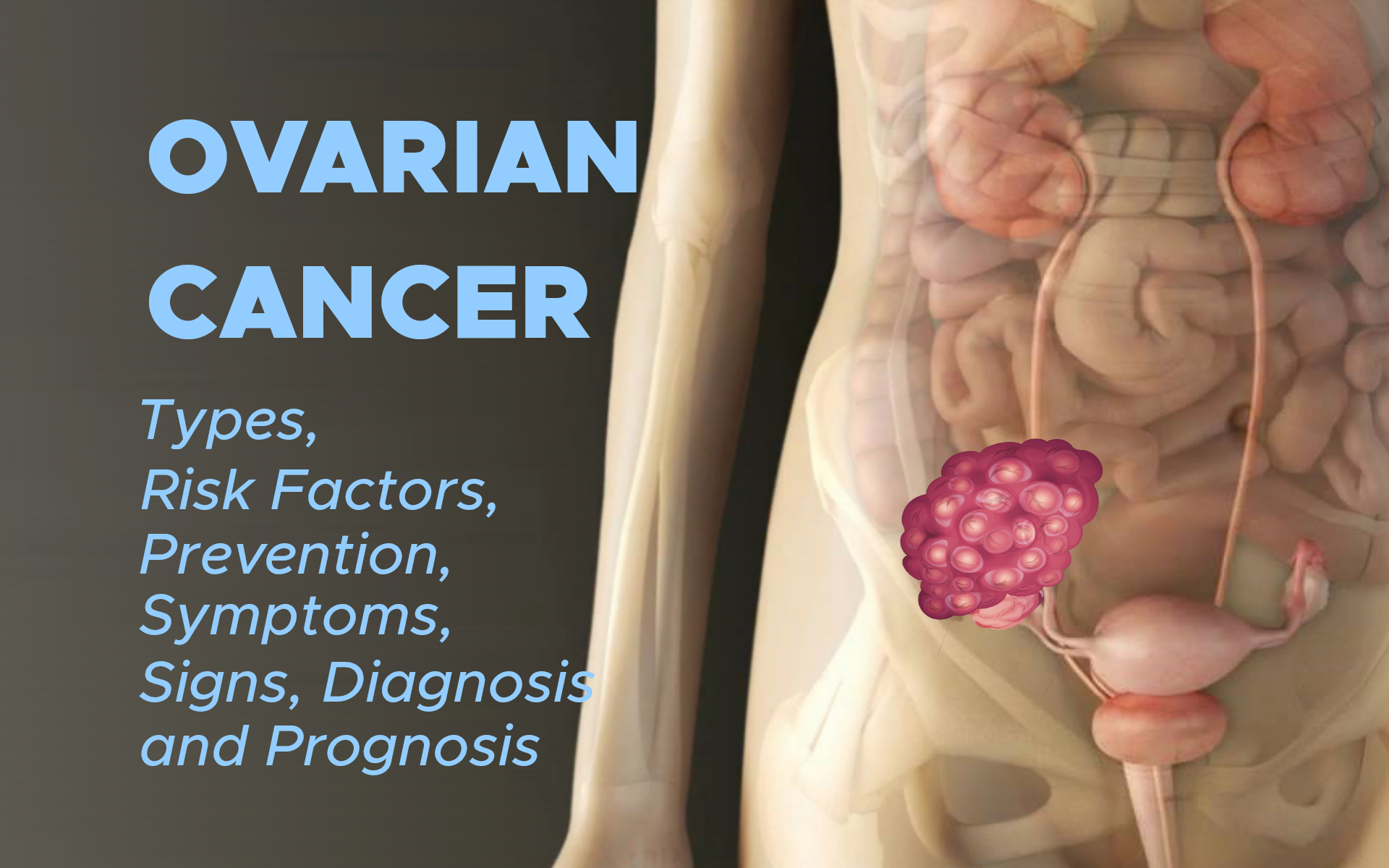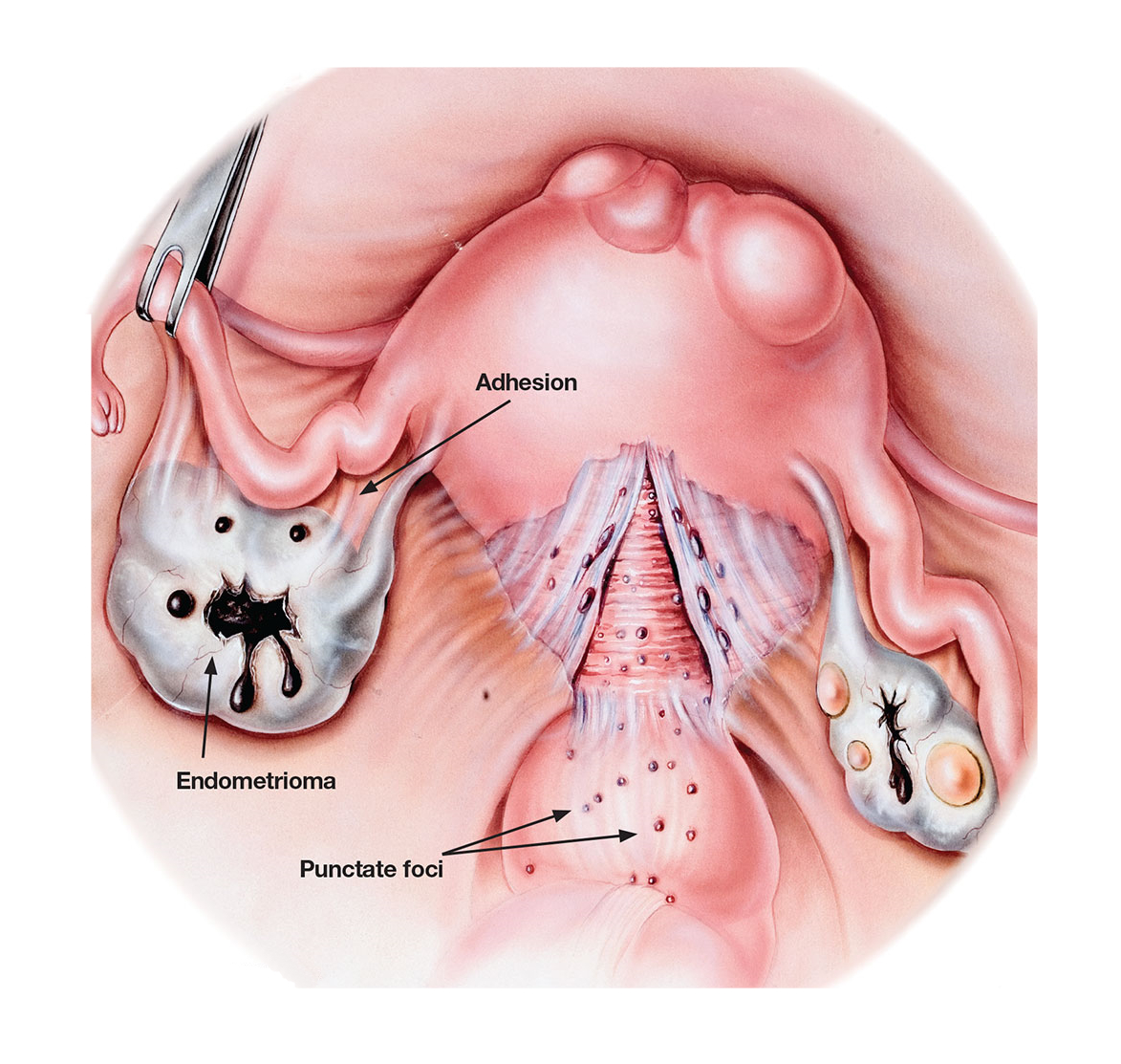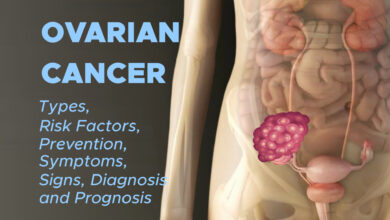
Ovarian Cancer: Risk Faktors
Factors that may raise a woman's risk of developing ovarian cancer.
Risk Factors of the Ovarian Cancer
A risk factor is anything that increases a person’s chance of developing cancer. Although risk factors often influence the development of cancer, most do not directly cause cancer.
Some people with several risk factors never develop cancer, while others with no known risk factors do. Knowing your risk factors and talking about them with your doctor may help you make more informed lifestyle and health care choices.
The following factors may raise a woman’s risk of developing ovarian cancer.
1. Family History
A strong family history of breast or ovarian cancer puts women at higher risk for ovarian cancer. Doctors believe this is because many of these families have genetic mutations, or changes in the gene, that are passed from generation to generation.
If you are concerned that ovarian cancer may run in your family, it is important to get an accurate family history, including any breast cancers in the family.
A family history of certain other types of cancer, including breast cancer, is linked to an increased risk of ovarian cancer. By understanding your family history, you and your doctor can talk about ways to reduce your risk and be proactive about your health.
2. Genetic Mutations
About 10% to 20% of ovarian cancers occur because a genetic mutation, or change, has been passed down within a family.
This inherited risk is called a germline mutation. American Society of Clinical Oncology (ASCO) recommends that all women diagnosed with epithelial carcinoma, the most common type of ovarian cancer, receive genetic testing at the time of diagnosis for several cancer risk genes, including BRCA1 and BRCA2, RAD51, and PALB.
This testing should be done regardless of whether there is a family history of ovarian or breast cancer. People who do not have an inherited genetic mutation should also be tested for BRCA mutations in the tumor cells, called somatic testing, as treatments for ovarian cancer with these mutations are effective regardless of whether the mutation is inherited.
A mutation in the BRCA1 or BRCA2 gene is associated with an increased risk of developing these cancers. A woman with an “average risk” has about a 1% to 2% lifetime risk of developing ovarian cancer.
A woman with a:
- BRCA1 mutation has around a 40% lifetime risk
- BRCA2 mutation has about a 10% to 20% lifetime risk.
BRCA-related ovarian cancers can occur in women who do not have a family history of either breast or ovarian cancer.
About 40% of women with ovarian cancer who are found to have a BRCA mutation do not have a family history. First-degree and second-degree family members should also receive genetic testing if a person with ovarian cancer has a BRCA mutation because the risk of these cancers can be inherited.
A genetic counselor can help you and/or your family members understand the results of genetic testing. The results of this testing can help determine your treatment options.
3. Genetic Conditions
Several rare genetic conditions cause ovarian cancer. Some of the most common include:
-
- Lynch syndrome. Lynch syndrome, also known as hereditary non-polyposis colorectal cancer, increases a woman’s risk of ovarian cancer and uterine cancer. It is caused by mutations in several different genes. Lynch syndrome also increases the risk of colorectal cancer and several other cancers.
- Peutz-Jeghers syndrome (PJS). PJS is caused by a specific genetic mutation. The syndrome is associated with multiple polyps in the digestive tract that become noncancerous tumors and with increased pigmentation (dark spots on the skin) on the face and hands. PJS raises the risk of ovarian cancer, breast cancer, colorectal cancer, cervical cancer, and several other types of cancer.
- Nevoid basal cell carcinoma syndrome (NBCCS). Women with NBCCS, also called Gorlin syndrome, have an increased risk of developing fibromas. Fibromas are benign fibrous tumors of the ovaries. There is a small risk that these fibromas could develop into a type of ovarian cancer called fibrosarcoma. People with NBCCS often have multiple basal cell skin cancers and jaw cysts and may develop medulloblastoma, a type of brain tumor, in childhood.
- Li-Fraumeni syndrome and ataxia-telangiectasia. Women with Li-Fraumeni syndrome or ataxia-telangiectasia may have a slightly increased risk of developing ovarian cancer.
- There may be other hereditary syndromes linked to these types of cancer, including small-cell carcinoma with an inherited SMARCA4 mutation and Sertoli-Leydig cell tumors with DICER1 syndrome. Research in this area is ongoing. Only genetic testing can determine whether a person has a genetic mutation. Most experts strongly recommend that people who are considering genetic testing first talk with a genetic counselor. This expert is specially trained and can explain the risks and benefits of genetic testing.
4. Age
A woman’s risk of developing ovarian cancer increases with age. Women of all ages have a risk of these cancers, but women over 50 are more likely to develop these cancers. About half of the women diagnosed with ovarian cancer are 63 years or older.
5. Obesity
Recent studies show that women who were obese in early adulthood, but not those who gain weight later in life, may have an increased risk of developing ovarian cancer. Women who are obese are more likely to die from any condition, including ovarian cancer.
6. Endometriosis
When the inside lining of a woman’s uterus grows outside of the uterus, affecting other nearby organs, it is called endometriosis.

This condition can cause several problems, but effective treatment is available. Researchers are continuing to study whether endometriosis is a risk factor for ovarian cancer. It may increase the risk of certain types of ovarian cancer, including clear cell and endometrioid ovarian cancers.
7. Ethnicities
Women of North American, Northern European, or Ashkenazi Jewish heritage have an increased risk of ovarian cancer. People of some of these ethnicities also have higher risks of BRCA mutations.
8. Reproductive History
Women may have an increased risk of ovarian cancer if they:
-
- Started their menstrual periods much earlier than the average age of about 12
- Have never given birth to a child
- Have unexplained infertility (the medical inability to have a child)
- Have not taken birth control pills
- Entered menopause much later than the average age of 51.
9. Hormone Replacement Therapy
Women who have taken estrogen-only hormone replacement therapy (HRT) after menopause may have a higher risk of ovarian cancer. The risk becomes higher the longer a woman uses the therapy. The risk decreases over time after the therapy ends.
Fertility drugs were once thought to increase the risk of ovarian cancer. It has been shown that they do not increase the risk.
